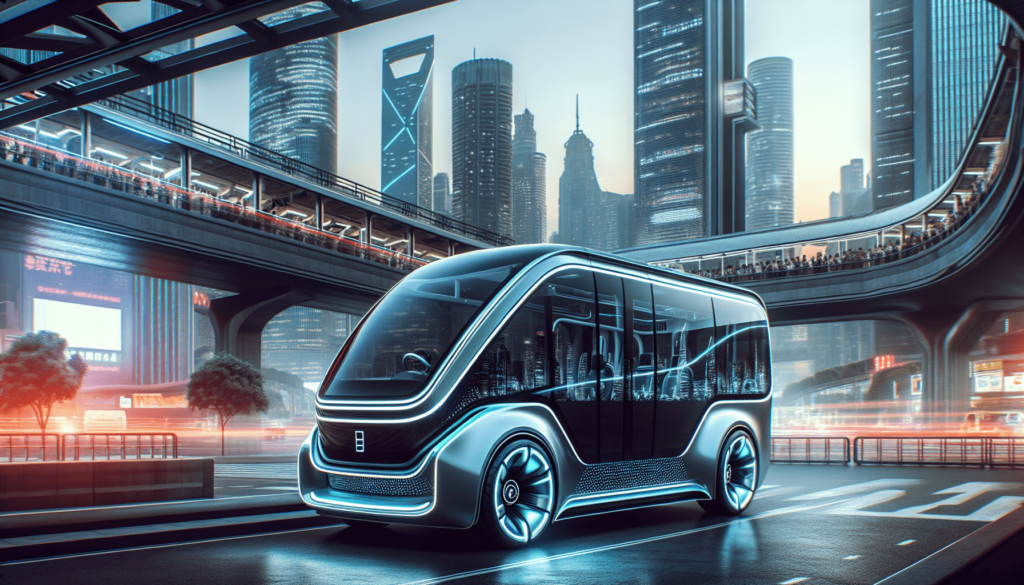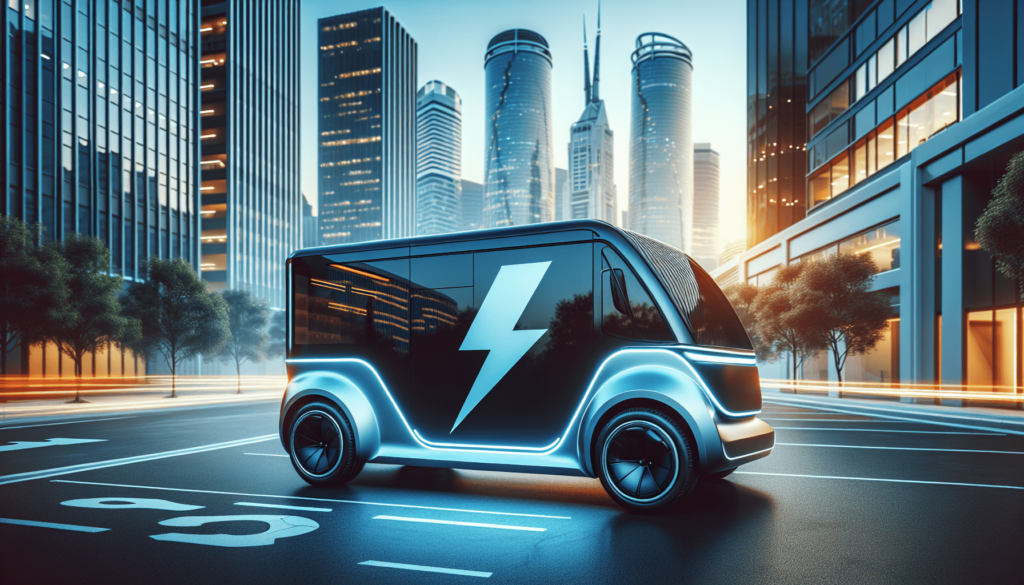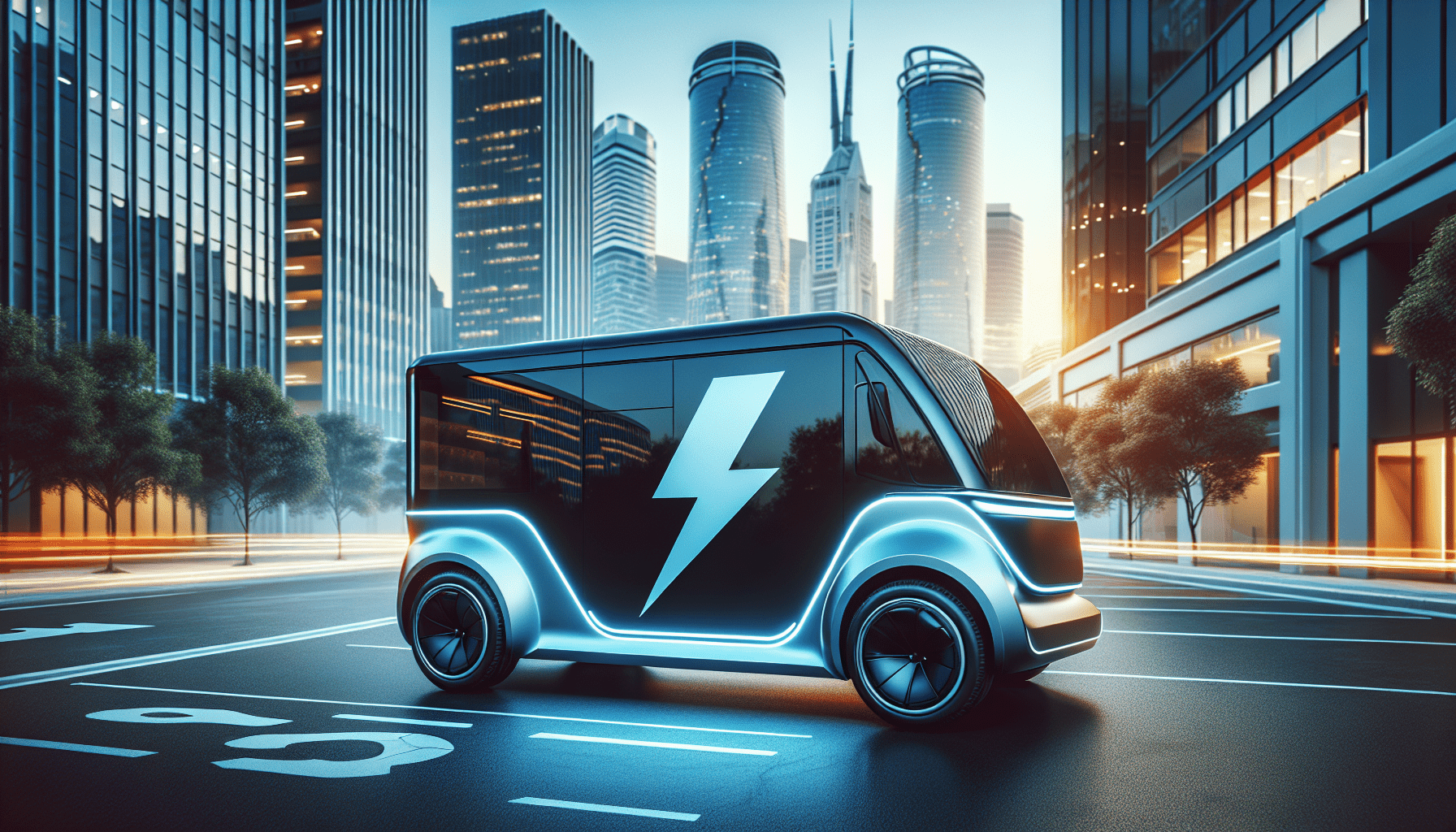Imagine a world where public transportation is not just a means to get from point A to point B, but a truly enjoyable experience. Well, thanks to Tesla, that world may soon be a reality with their revolutionary creation – the Tesla Minibus. Combining cutting-edge technology, sustainability, and a sleek design, this groundbreaking vehicle has the potential to transform the way we commute, making it not only efficient but also comfortable and stylish. Get ready to say goodbye to crowded buses and hello to the future of public transportation with the Tesla Minibus.

1. Overview of Tesla Minibus
1.1 Brief History of Tesla Minibus
The Tesla Minibus is an innovative electric vehicle designed and manufactured by the renowned company, Tesla Inc. The concept of the Minibus was first introduced by Tesla CEO, Elon Musk, in his “Master Plan, Part Deux” in 2016. Musk outlined his vision of developing an electric vehicle specifically tailored for public transportation, aiming to revolutionize the way people commute.
1.2 Features and Specifications
The Tesla Minibus boasts a variety of impressive features and specifications that set it apart from traditional public transportation vehicles. With a sleek and modern design, the Minibus offers seating for up to 12 passengers, ensuring a comfortable and spacious journey for all. Powered entirely by electricity, the Minibus produces zero emissions, contributing towards a cleaner and greener environment.
Equipped with the renowned Tesla Autopilot technology, the Minibus has the potential to be fully autonomous, providing passengers with a safe and convenient mode of transportation. Additionally, advanced safety features such as collision avoidance systems, lane departure warnings, and adaptive cruise control enhance the overall passenger experience.
1.3 Advantages of Tesla Minibus
The Tesla Minibus brings numerous advantages to the field of public transportation. Firstly, its electric powertrain eliminates the dependence on fossil fuels, reducing the carbon footprint and addressing environmental concerns. Furthermore, the Minibus’s autonomous capabilities, once fully developed, have the potential to significantly enhance safety and reduce the risks associated with human error.
Moreover, the Minibus aims to improve accessibility by providing efficient transportation options for individuals with mobility challenges. With its spacious design and ease of entry, the Minibus ensures a comfortable and accessible experience for passengers of all abilities.
2. Impact on Public Transportation
2.1 Addressing Environmental Concerns
One of the most significant impacts of the Tesla Minibus on public transportation is its contribution to mitigating environmental concerns. By relying solely on electricity as its power source, the Minibus eliminates greenhouse gas emissions, improving air quality and reducing pollution. This transition from conventional buses to electric Minibuses plays a crucial role in combating climate change and creating a sustainable future.
2.2 Reducing Congestion
With its efficient design and autonomous capabilities, the Tesla Minibus has the potential to alleviate traffic congestion in urban areas. The integration of Minibuses in public transportation systems can promote the use of shared mobility, reducing the number of private vehicles on the road. Through innovative routing algorithms and real-time traffic data, Minibuses can optimize their routes and reduce travel times, leading to a smoother and more efficient commuting experience.
2.3 Enhancing Accessibility
The Tesla Minibus aims to enhance accessibility in public transportation by providing a versatile and inclusive solution. Its low-floor design allows for easy boarding and disembarking, catering to individuals with strollers, wheelchairs, or mobility aids. Moreover, the Minibus’s autonomous capabilities can be programmed to accommodate specific accessibility requirements, ensuring no one is left behind in the journey towards a more inclusive society.
2.4 Improving Efficiency
Compared to traditional buses, the Tesla Minibus offers enhanced energy efficiency and reduced operational costs. With its electric powertrain, the Minibus eliminates the need for costly and environmentally detrimental fossil fuels. Additionally, the autonomous driving technology optimizes routes, minimizes idle time, and maximizes passenger capacity, resulting in a more efficient and cost-effective public transportation system.
3. Potential Market and Applications
3.1 Urban Transportation
The Tesla Minibus holds immense potential in transforming urban transportation systems. In densely populated cities, where traffic congestion and air pollution are pressing issues, the Minibus can provide a sustainable and efficient alternative. By integrating the Minibus into existing public transportation networks, cities can offer reliable and eco-friendly transportation options to their residents, reducing the reliance on private vehicles.
3.2 Commercial Shuttles
Another potential market for the Tesla Minibus is in the realm of commercial shuttles. With its spacious interior and advanced safety features, the Minibus can cater to the transportation needs of corporate campuses, airports, and resorts. Offering a comfortable and environmentally friendly mode of transportation, the Minibus can enhance the overall experience for employees, guests, and visitors.
3.3 School Bus Services
The Tesla Minibus also presents an exciting opportunity to revolutionize school bus services. With its autonomous capabilities and safety features, the Minibus can ensure the safe transportation of students while reducing the burden on parents and school districts. The environmentally friendly nature of the Minibus aligns with the values taught in educational institutions, educating students about the importance of sustainable transportation.
3.4 Airport Transfers
The Tesla Minibus’s ability to provide efficient and reliable transportation makes it an ideal choice for airport transfers. With its ample seating capacity, passengers can comfortably commute between airports and city centers. The integration of autonomous driving technology can further streamline the process, ensuring a seamless and time-efficient transfer for travelers.
4. Challenges and Limitations
4.1 Infrastructure Requirements
The widespread adoption of the Tesla Minibus faces certain challenges, particularly in terms of infrastructure. The establishment of a robust charging network is essential to support the increased demand for electric vehicles. Adequate charging stations along major transportation routes and in urban areas will be crucial to ensure the Minibus’s seamless operation.
4.2 Cost and Affordability
While the Tesla Minibus offers numerous advantages, its initial cost may pose a challenge to its widespread adoption. The advanced technology and state-of-the-art features come with a higher price tag compared to traditional buses. However, as economies of scale kick in and manufacturing processes become more efficient, the price of Minibuses is likely to decrease, making them more accessible to transportation operators and authorities.
4.3 Potential Safety Concerns
As with any new technology, the autonomous driving capabilities of the Tesla Minibus present safety concerns that need to be addressed. Extensive testing, regulatory frameworks, and improvements in artificial intelligence are essential to ensure the safe operation of autonomous Minibuses. Collaborations between Tesla, regulatory bodies, and transportation authorities can foster the development of comprehensive safety standards to address these concerns.

5. Government Initiatives and Support
5.1 Encouraging Adoption through Incentives
To promote the adoption of the Tesla Minibus and other electric public transportation vehicles, governments can provide incentives and subsidies. These may include tax breaks, grants, or preferential policies for fleet operators that transition to eco-friendly options. By reducing the financial burden and incentivizing the use of sustainable transportation, governments play a crucial role in accelerating the adoption of Minibuses.
5.2 Collaboration with City Authorities
Successful integration of the Tesla Minibus into public transportation systems requires collaboration between Tesla and local city authorities. By actively involving city planners, transportation agencies, and urban development departments, the unique needs and challenges of each city can be addressed. This collaborative approach fosters effective deployment strategies, route optimization, and stakeholder engagement, ensuring a seamless transition to electric public transportation systems.
5.3 Future Integration in Public Transportation Systems
Governments can take a proactive stance towards the future integration of the Tesla Minibus into public transportation systems. By setting goals and establishing long-term plans, cities can create a roadmap for the implementation of Minibuses and other electric vehicles. This includes the development of charging infrastructure, ensuring compatibility with existing public transportation networks, and considering potential policy changes to support the transition.
6. Case Studies and Success Stories
6.1 Tesla Minibus Pilot Projects
Several pilot projects have been conducted to evaluate the feasibility and effectiveness of the Tesla Minibus. These projects have been implemented in various cities and have showcased the potential of Minibuses in reducing emissions and improving transportation efficiency. The data collected from these pilot projects serves as a valuable resource for future planning and decision-making.
6.2 Testimonials from Users
Users of the Tesla Minibus have provided positive feedback regarding their experience. Passengers appreciate the spacious and comfortable interior, while operators value the efficiency and environmental benefits. Testimonials highlight the convenience, safety, and overall satisfaction with the Minibus as a mode of public transportation.
6.3 Lessons Learned
The case studies and success stories surrounding the Tesla Minibus provide important insights and lessons for future implementation. These experiences have highlighted the importance of effective communication, stakeholder engagement, and infrastructure planning. Additionally, the experiences have shed light on the benefits of continuous improvement in autonomous driving technology and passenger experience.
7. Future Developments and Innovation
7.1 Autonomous Driving Capability
The Tesla Minibus has the potential to evolve further with the advancement of autonomous driving technology. As Tesla continues to innovate in this field, the Minibus can become fully autonomous, further enhancing safety, efficiency, and convenience. The integration of artificial intelligence and machine learning algorithms will ensure continuous improvement and refinement of the autonomous driving capabilities of the Minibus.
7.2 Battery Technology Advancements
Improvements in battery technology are vital for the continuous development and success of the Tesla Minibus. Longer battery range, reduced charging times, and increased durability will significantly enhance the usability and operational efficiency of Minibuses. Tesla’s commitment to advancing battery technology, as demonstrated in their electric vehicle lineup, lends credibility to the potential advancements in store for the Minibus.
7.3 Integration with Renewable Energy
The future development of the Tesla Minibus can be closely intertwined with the expansion of renewable energy sources. By integrating solar panels and harnessing energy from wind or solar farms, the Minibus can potentially become a self-sustaining vehicle, reducing reliance on external power sources. This integration would further reinforce the Minibus’s commitment to sustainability and contribute towards achieving a carbon-neutral public transportation system.
8. Comparisons with Traditional Public Transportation
8.1 Cost-effectiveness
Compared to traditional public transportation vehicles, the Tesla Minibus offers long-term cost advantages. Although the upfront cost may be higher, Minibuses have lower operational and maintenance costs due to the absence of fuel expenses and reduced maintenance requirements. Over time, these cost savings offset the initial investment, making Minibuses a more cost-effective choice for transportation operators.
8.2 Environmental Impact
When compared to conventional buses powered by fossil fuels, the Tesla Minibus has a significantly lower environmental impact. By completely eliminating tailpipe emissions and reducing reliance on non-renewable resources, the Minibus plays a role in reducing pollution and mitigating climate change. The transition to electric Minibuses also enhances air quality, leading to healthier and more sustainable communities.
8.3 User Experience
The Tesla Minibus offers an enhanced user experience compared to traditional public transportation vehicles. With its spacious and comfortable interior, passengers have a more enjoyable journey. The advanced safety features and autonomous capabilities make the Minibus a reliable and secure mode of transportation. Additionally, the Minibus’s eco-friendly nature and its contribution to reducing traffic congestion can further improve the overall user experience.
9. Potential Disruption to Existing Public Transportation Industry
9.1 Impact on Bus Manufacturers and Operators
The introduction of the Tesla Minibus has the potential to disrupt the existing public transportation industry. Traditional bus manufacturers and operators may face challenges in adapting to the transition towards electric and autonomous vehicles. However, this disruption also presents opportunities for collaboration and innovation, encouraging industry stakeholders to explore new avenues and stay ahead of emerging trends.
9.2 Job Creation and Training Opportunities
While the adoption of the Tesla Minibus may impact certain job roles, it also creates a demand for new positions and skill sets. The transition towards electric and autonomous public transportation systems requires the development of charging infrastructure, maintenance technicians, and software engineers. Training and upskilling programs can help bridge the gap and ensure a smooth transition for the workforce, ultimately leading to job creation and economic growth.
10. Conclusion
10.1 Summary of Benefits
The Tesla Minibus offers a range of benefits that have the potential to revolutionize public transportation. From reducing environmental impact and congestion to enhancing accessibility and efficiency, the Minibus paves the way for a sustainable and user-centric future. Its autonomous driving capabilities and advanced safety features make it a reliable and safe mode of transportation for passengers of all abilities.
10.2 Vision for the Future of Public Transportation
The Tesla Minibus exemplifies the vision for the future of public transportation – a vision that encompasses sustainable practices, inclusive design, and technological innovation. As more cities and transportation authorities embrace the potential of the Minibus, we can expect a transformation in the way people commute. By working collaboratively, governments, manufacturers, and communities can create a public transportation system that is not only efficient but also environmentally friendly and accessible for all. The Tesla Minibus stands at the forefront of this transformation, leading the way towards a future of cleaner, smarter, and more efficient transportation.
